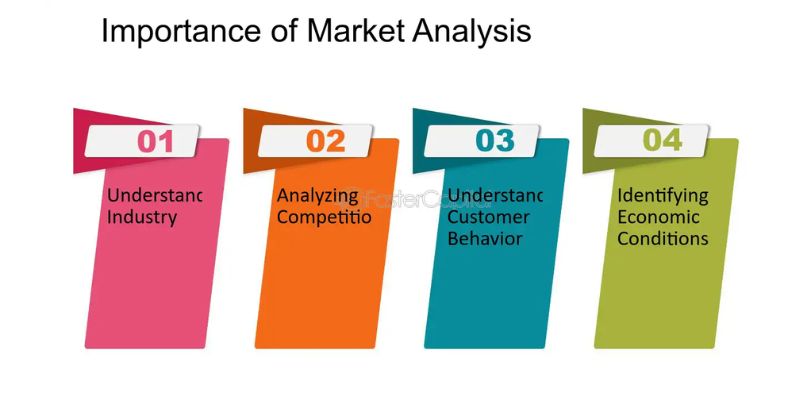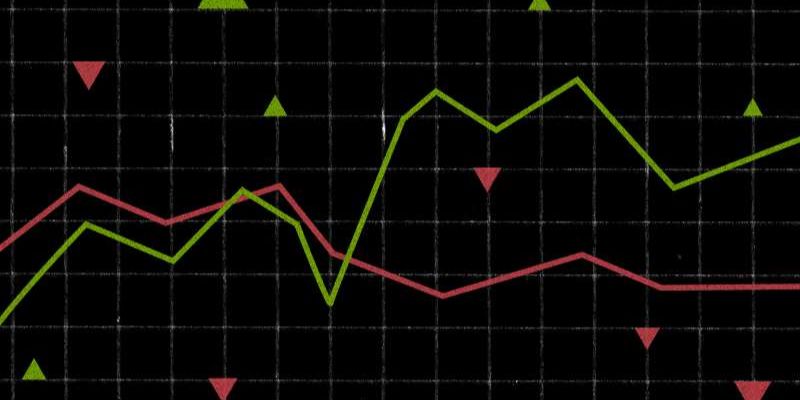Financial Market Analysis Decoded: Your Ultimate How-To Guide
Ever wonder how experts peel back the layers of noisy market data to reveal clear financial insight? It’s no magic—it’s skill, and you can learn it too. Here’s a deep dive into how to do financial market analysis without getting lost in jargon. You’ll grab the basics, then jump deeper into trends and methods the pros use. Whether you’re looking at a company’s health or wide market shifts, I’ll walk you through a mix of technical know-how and savvy fundamental analysis. You won’t just follow the market—you’ll understand it. Ready to crack the code? Let’s get started.
Understanding the Core of Financial Analysis
Grasping the Fundamentals of Financial Analysis
Let’s kick things off with the basics, shall we? Financial analysis may sound fancy and complex, but it’s really your secret weapon to making smart money moves. It’s all about digging deep into money numbers to make sense of a company’s health. Think of it as giving a business a check-up to see how it’s doing.
First up, you need to get your hands on some key documents. To truly know a company, look at its financial statements. They hide nothing and tell you where the money’s flowing. We’ve got three big players here: balance sheet, income statement, and cash flow statement. Picture a financial triple-threat that’ll give you the power to make cool investment calls.
Now, fancy lingo time: liquidity, profitability, and debt ratios. Don’t sweat! Liquidity is just about how quickly a company can turn assets into cash. We need cash fast, right? Profitability ratios, well, they measure if the company’s making good money. And debt ratios – it’s all about how much debt they’ve got compared to their assets.
Got it so far? Great! Let’s keep going.
Deciphering Financial Statements for In-Depth Knowledge
Ever tried reading financial charts? It’s like a treasure map for your money. These charts give you the lowdown on prices, trends, and where the market’s headed. Now, don’t mix up technical analysis with fundamental analysis. They’re like two different paths to the same treasure.
Technical analysis is like a crystal ball. It uses past market data and lots of charts to guess where prices might go. Think of it like weather forecasting, but for stocks. Fundamental analysis is a bit like detective work. It’s more concerned with a company’s true value, digging through financial reports and economic news.
This game’s not just about buying and selling stocks. It’s also about research, being curious, and asking, “What makes this company awesome (or not)?” Is their industry growing? Are their rivals eating their lunch? How healthy are their finances?
In a nutshell, financial analysis is your guide to not losing your shirt in the stock market. It gives you the chops to pick winners and steer clear of the losers. So, brush up on those skills, keep an eye on the trends, and remember: the more you know, the better your chances of hitting that investment jackpot.

Delving into Market Evaluation and Trends
Employing Investment Analysis Techniques
Let’s dive right in. Investment analysis techniques guide us on where to put our money. First things first, look at a company’s health through its financial reports. We talk about the balance sheet, income statement, and cash flow statement here. Understanding these can help you spot winners in the stock market.
Checking a company’s liquidity ratios matters. These numbers tell us if a company can pay its bills. High liquidity is like having a life jacket in tricky waters. Next up are profitability ratios. These clues show if a company can make decent money from what it sells.
Then there’s debt ratios scrutiny. Too much debt means a company may struggle. Think of it like having a backpack full of rocks; it’s hard to climb up.
Researching Financial Trends to Predict Market Movements
Moving on, knowing financial trends research can make or break your game. It’s like being a detective, looking for hints of what’s coming. I scour through tons of data, seeking trends that might repeat.
Let’s talk about technical vs fundamental analysis. They’re like two different road maps to the same treasure. Technical folks use charts to predict. They believe price moves show market mood. Fundamental analysts are different. They look at a company’s real worth. They study events, news, and financial health.
Reading financial charts comes next. It’s not as tough as it sounds. Charts help you see patterns and make sense of price moves. Think of charts as a storybook of a stock’s life.
Quantitative market evaluation is for number fans. Maths and stats help us make choices based on hard data. On the flip side, qualitative financial assessment looks at the less obvious bits. It’s about the quality, not just the numbers.
What about the big picture? That’s where economic indicators impact sneaks in. Things like job data, inflation, and sales figures shake up prices. Traders keep eyes glued on this stuff. And they should. These indicators can warn us about storms or shine in the market.
Understanding sector analysis approach and industry competitive analysis is key. It’s like picking the best team to play in your fantasy league. You want a strong team that can score. Knowing sectors and industries helps you choose the stars.
Lastly, market trends forecasting is tricky but exciting. It’s a blend of what we’ve talked about, plus gut feeling. We can’t see the future, but we can make smart bets. And that’s what makes market analysis thrilling. The right mix of skills, knowledge, and sometimes, luck, leads us to winning choices.
The key to market analysis? Stay curious, keep learning, and use these tools to your advantage. Your ultimate goal is to become the wizard of the market, with each technique a spell to conjure up wise investment choices.

Comparative Analysis: Technical vs Fundamental Perspectives
Mastering Chart Analysis in Finance
To win in finance, you must read charts well. Reading financial charts is key for smart moves. Charts tell the tale of stocks, showing their dance over time. To get it right, follow trends and patterns. They hint at what might come next. You should grasp several investment analysis techniques. Use them to spot financial trends research fast. With practice, these clues jump out at you. This knack takes time but pays off well.
Chart analysis in finance uses lines, bars, and candles. Lines are simple, tracing the path of prices. Bars give more, like highs and lows each day. Candles add color, red for down, green for up. They offer a quick peek at how the stock fared. Through chart analysis, smart folks sniff out good buys.
Quantitative vs Qualitative Financial Assessment Strategies
Let’s break down two ways to judge stocks. First is quantitative market evaluation. It’s all about numbers. Think of financial statements examination, like income statement analysis. We look deep at what companies earn and spend. Cash flow is key. It must flow strong for businesses to thrive. Balance sheet interpretation is crucial too. It shows if a firm stands on firm or shaky ground.
Qualitative financial assessment is more about stories. We snoop into a company’s place in its sector. With sector analysis approach, we see how firms stack up against rivals. Industry competitive analysis digs even deeper. It reveals who has the edge. We peek into leaders’ plans and history. It’s a hunt for hints of future success.
Both ways, technical vs fundamental analysis, serve their purpose. Some prefer crunching numbers, some like the full story. To know stocks inside out, blend both methods. Look at the figures, then read between the lines.
The impact of economic indicators can’t go unnoticed. These signs, like job reports or sales numbers, nudge the market. Savvy investors watch these close. They adjust sails to catch the right winds. Keep tabs on what moves the economy as a whole. It hints at where markets may head.
Truly knowing financial trends research helps see what lies ahead. Market analysis strategies are like tools in a kit. The more you have, the better you build your future. Understand the technical side, dive into data. Grasp the human side, draw from real-world scenes. With both, you are armed well for the financial fray.
Mix it up with financial ratios demystified. Ratios, like profitability or liquidity, are quick health checks for firms. A glance at these and you get the gist of how well a company does.
Bringing these angles together, you’re set to ace financial markets. Keep learning, keep watching, and stay curious. Your journey through the numbers and narratives will lead to wise decisions, and, hopefully, to winning in the world where money never sleeps.

Advanced Techniques in Financial Market Analysis
Integrating Macroeconomic Factors with Sector Analysis
To top financial minds, mixing big picture economics with deep dives into market sectors is key. We look at the whole world’s money moves. Then we zoom in on how this shifts cash in different business types. Let’s say a country’s money worth goes down; it could mean cheaper stuff made there and big sales abroad. But, same deal, it could hurt folks with loans in other monies. We gotta look at how these big shifts touch each part of the market. And know that our tech-know-how and knack for spotting what’s up ahead really matter.
When we join big trends with sector smarts, we get a clear map of where to put our money. We spot which business types are set to win and which might hit snags. This kind of combo-play paints a full picture, leading to wiser choices.
Utilizing Financial Ratios and Performance Indicators for Investment Decisions
Making money talk is about more than just a hunch. We use secret codes called financial ratios to crack the real story. These codes tell us if a business can pay its bills, make cash, and hang onto its money. Plus, they help us see if a company owes too much. They are like health checks for businesses.
First, we scout for liquidity ratios. Can the company handle its bills right now? Next, we look at profitability ratios. Is the company making good dough? Last up, we check debt ratios. Is the company swimming in IOUs or sitting pretty? These checks tell us lots about who’s fit to grow and who might fall flat.
We also keep an eye on performance indicators. They’re the trail markers showing how well a company’s doing compared to others. They guide us on the right path in the wild woods of money-making choices. And they’re neat tools for seeing who does the best with what they’ve got.
With these secret codes in hand, we’re like treasure hunters. We sift through piles of numbers to find the real gold. It’s this mix of stats and smarts that opens doors to clever investment picks. Our money moves aren’t just guesses. They’re backed by solid, number-crunching know-how. And that’s what brings home the wins in this big game of bucks.
We’ve navigated the complex world of financial analysis together, breaking it down into key parts. From the basics to advanced methods, we’ve covered how to read financial statements and use different analysis strategies. We’ve also explored how to assess the market, analyze charts, and choose between technical and fundamental approaches.
I hope you now feel better equipped to make smart investment choices. Always remember, the more you know about the market and its trends, the better your investment decisions will be. Keep these lessons in mind, and you’ll have the tools to move forward with confidence in the financial world. Stay curious, keep learning, and here’s to your future financial success!
Q&A :
What are the essential steps in conducting financial market analysis?
Financial market analysis involves several key steps to help investors and analysts understand market conditions and make informed decisions.
- Define Objectives: Clearly determining the goals of the analysis is crucial, whether it’s to assess the performance of a particular stock, the potential of a sector, or the stability of an entire market.
- Collect Data: Gather relevant financial data, including historical price data, economic indicators, company financial statements, and market sentiment.
- Quantitative Analysis: Employ statistical and mathematical models to analyze the data. This includes ratio analysis, trend analysis, and the use of technical indicators.
- Qualitative Analysis: This aspect focuses on non-numeric data such as management quality, industry cycles, market trends, and competitive advantages.
- Interpretation and Forecasting: Analyses are interpreted to predict future market behavior, identify potential risks, and discern opportunities.
- Report and Decision Making: Conclude the analysis with a comprehensive report that guides investment decisions or policy-making.
Ensuring the analysis is thorough and combines both quantitative and qualitative findings will provide a more comprehensive view of the financial markets.
How can a beginner start learning about financial market analysis?
A beginner interested in financial market analysis can kickstart their learning journey by following a systematic approach:
- Educational Resources: Utilize books, online courses, and workshops focused on financial analysis basics, stock markets, and investment strategies.
- Understand Financial Statements: Learn to read and interpret balance sheets, income statements, and cash flow statements.
- Get Familiar with Analytical Tools: Begin using analytical software and tools that can help in understanding market trends and patterns.
- Practice with Simulation: Several platforms offer virtual trading experiences, allowing beginners to practice analysis and trading without financial risk.
- Stay Updated: Follow financial news, market commentaries, and expert discussions to remain informed about the latest market developments.
- Network: Join groups or forums where you can discuss and learn from experienced analysts or fellow learners.
Starting with these steps can significantly improve a beginner’s confidence and competence in financial market analysis over time.
What is the difference between technical and fundamental analysis in the financial markets?
Technical and fundamental analysis are two cornerstone approaches to financial market analysis, each with a different focus.
- Fundamental Analysis: This method assesses a security’s intrinsic value by examining relevant economic, financial, and other qualitative and quantitative factors. Analysts consider company financials, industry conditions, market position, and economic indicators to make long-term investment decisions.
- Technical Analysis: In contrast, technical analysis is based on the study of historical market data, primarily price and volume. Technical analysts use charts and other tools to identify patterns that can suggest future market trends. This approach is often used for short-term trading predictions.
The key difference lies in the methodology and timeframe; fundamental analysis seeks to determine an asset’s value through underlying economic conditions, while technical analysis looks at past market activity to forecast future price movements.
What tools do financial analysts use for market analysis?
Financial analysts use a variety of tools to dissect financial data and market trends, including:
- Financial Modeling Software: Such as Excel or specialized programs for building financial models and performing scenario analysis.
- Statistical Analysis Programs: Tools like SPSS or SAS to run complex statistical tests and predictive models.
- Data Feeds and APIs: Real-time data providers for up-to-date market data, financial statements, and economic indicators.
- Charting Tools: Apps like TradingView or MetaTrader that provide advanced charting capabilities for technical analysis.
- Fundamental Analysis Platforms: Bloomberg Terminal or Thomson Reuters Eikon, which give in-depth fundamental data about companies and industries.
- Portfolio Management Software: For tracking and analyzing portfolio performance against benchmarks or indices.
Combining these tools enables analysts to create a robust and multifaceted view of the market, helping to make more informed decisions.
Why is financial market analysis important for investors?
Financial market analysis is of paramount importance for investors due to several reasons:
- Informed Decisions: It empowers investors with knowledge to make educated decisions rather than relying on guesswork or speculation.
- Risk Management: Investors can identify potential risks and take steps to mitigate them through diversification or hedging strategies.
- Identify Opportunities: Analysis helps in spotting trends, cycles, and growth potential in various sectors or individual securities.
- Performance Tracking: Regular market analysis allows investors to monitor the performance of their investments and adjust strategies as needed.
- Market Sentiment: Understanding investor sentiment can be key in anticipating market movements and timing investments effectively.
In summary, thorough market analysis can significantly enhance the success of investment strategies by helping investors understand market dynamics and adjust their approaches accordingly.

